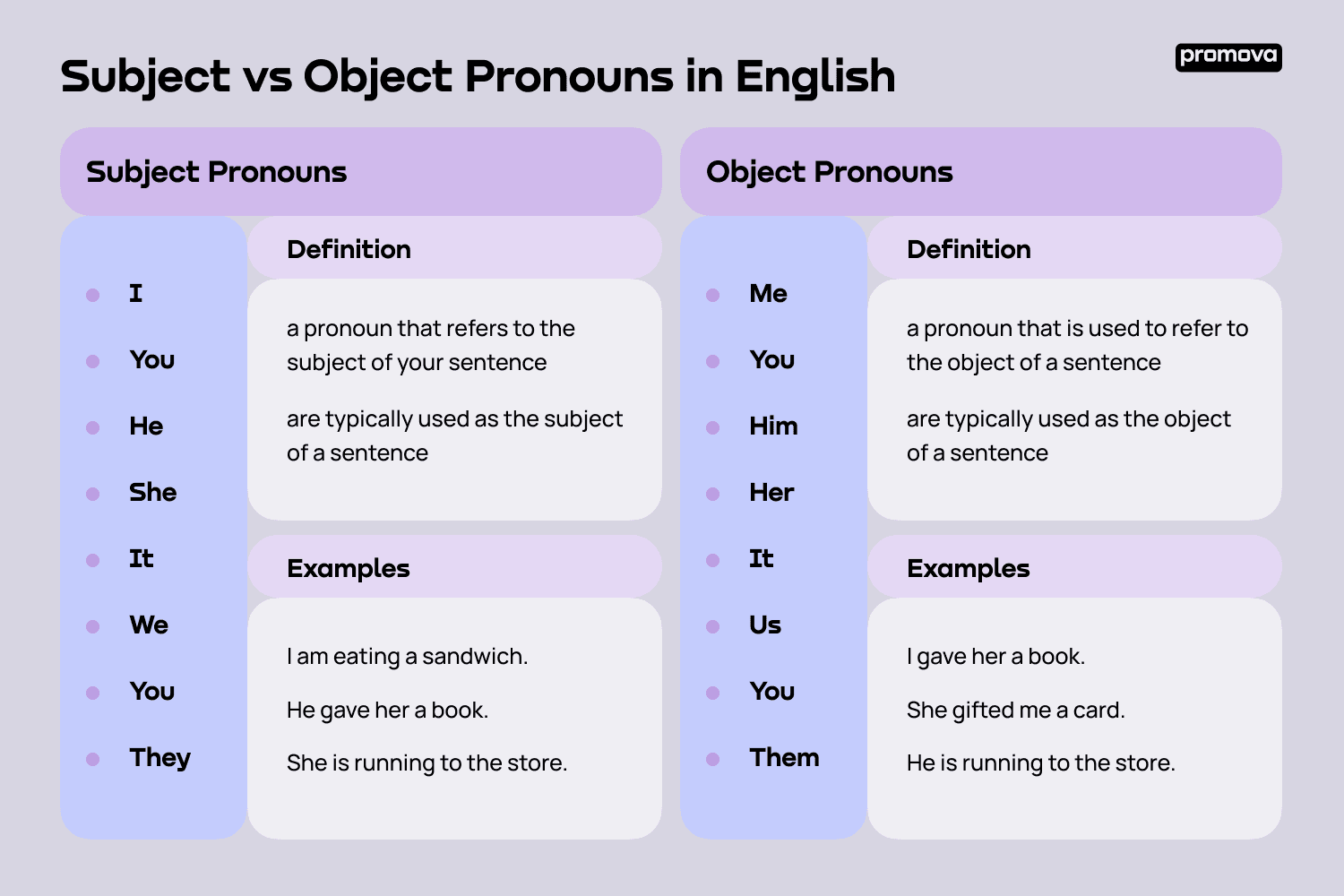Subject vs Object Pronouns in English
Contents
When learning English, you may come across the terms “subject pronoun” and “object pronoun”. But what are they? And how do they differ? We’ll be exploring the answers to these questions and more in this reference.
Definition of Subject and Object Pronouns
A pronoun simply replaces a noun in a sentence, and it can either be a subject or an object. A subject pronoun is a pronoun that refers to the subject of your sentence, while an object pronoun is a pronoun that is used to refer to the object of a sentence. The subject of your sentence is the person, place, or thing that's doing the action, while the object of your sentence is the person, place, or thing that is affected by the action.
For example, in the sentence “I am eating a sandwich”, the subject pronoun “I” is used to refer to the person performing the action (eating a sandwich), while the object pronoun “a sandwich” is used to refer to the object that is being affected by the action (being eaten).
Differences between Subject and Object Pronouns
Subject pronouns and object pronouns differ in terms of their usage and function in a sentence. Subject pronouns are used to refer to the subject of a sentence, while object pronouns help us refer to the object of a sentence.
Subject pronouns are typically used as the subject of a sentence, while object pronouns are typically used as the object of a sentence. However, there are exceptions to this rule. For example, in the sentence “He gave him a book”, the subject pronoun “he” is refers to the subject of the sentence (the person who gave the book), while the object pronoun “him” is used to refer to the object of the sentence (the person who received the book).
In addition, subject pronouns are typically used to refer to the person performing an action, while object pronouns are typically used to refer to the person receiving the action. For example, in the sentence “She gave me a book”, the subject pronoun “she” is used to refer to the person performing the action (giving the book), while the object pronoun “me” is used to refer to the person receiving the action (receiving the book).
1
Examples of Subject and Object Pronouns
Subject pronouns and object pronouns are used in many different types of sentences. Here are some examples of subject and object pronouns in use:
Subject Pronouns:
- I am eating a sandwich.
- He gave her a book.
- She is running to the store.
Object Pronouns:
- I gave her a book.
- She gifted me a card.
- He is running to the store.
As you can see, subject pronouns are typically used as the subject of a sentence, while object pronouns are typically used as the object of a sentence.
Rules of Subject Pronouns and Object Pronouns
When using subject pronouns and object pronouns, there are a few rules that you should keep in mind.
- Subject pronouns are the subject of a sentence, while object pronouns are its object.
- Subject pronouns are typically used to refer to the person performing an action, while object pronouns are typically used to refer to the person receiving the action.
- Subject pronouns are used to form the conjugation of verbs in the present tense, while object pronouns are used to form the conjugation of verbs in the past tense.

List of Subject and Object Pronouns
Here is a list of subject and object pronouns in English:
Subject Pronouns:
- I
- You
- He
- She
- It
- We
- You
- They
Object Pronouns:
- Me
- You
- Him
- Her
- It
- Us
- You
- Them
Summary
When using subject pronouns and object pronouns, pay close attention to the context of the sentence. You'll quickly understand where the subject and object are, which will help this topic immediately click in your head.
If you want to learn more about pronouns and their role in English, check out handy references below!



Comments